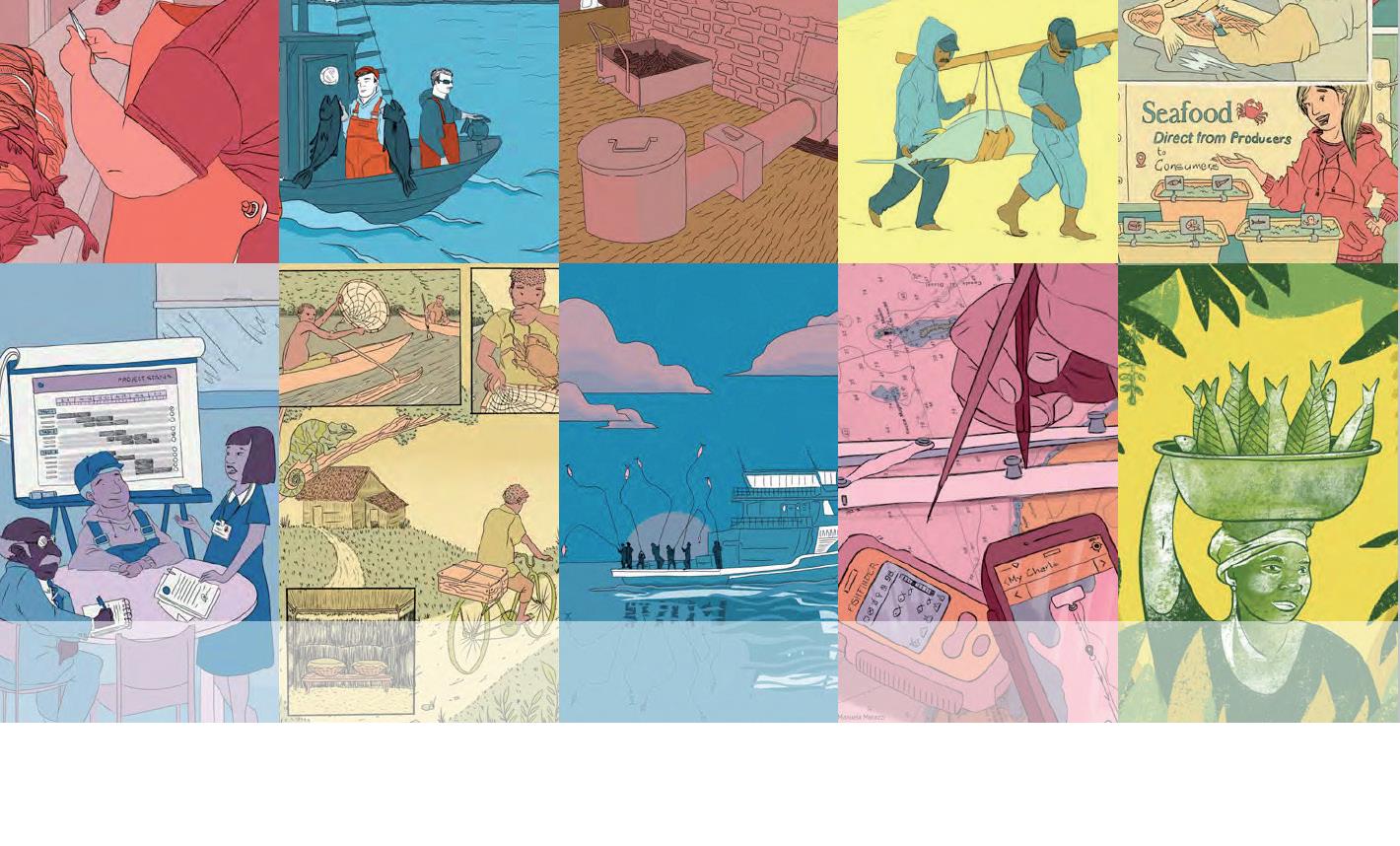New Technical paper shines a light on value chains, post-harvest and trade through recent case studies

This is an article about the FAO Fisheries and Aquaculture Technical paper 652. It is the second paper in a series. See the previous paper here.
 Cover page of the technical paper. Illustrations by Manuela Marazzi © FAO |
Securing sustainable small-scale fisheries: Showcasing applied practices in value chains, post-harvest operations and trade
Small-scale fisheries, encompassing all activities along the value chain in both marine and inland waters, play an essential role in food security and nutrition. Small-scale fisheries value chains employ millions of people across a range of activities. Importantly, about half of those working in small-scale fisheries are women, mostly engaged in post-harvest activities, especially marketing and processing.
Fisheries value chains are part of broader food systems. These food systems encompass all aspects of – and activities related to – fish production, processing, distribution, sale and consumption, as well as their socio-economic and environmental impacts. In a food system, factors such as climate, environment, infrastructure and institutions are linked to the value chain. For this reason, developing and improving small-scale fisheries value chains requires a comprehensive approach.
The Voluntary Guidelines for Securing Sustainable Small-Scale Fisheries in the Context of Food Security and Poverty Eradication (SSF Guidelines) provide a framework for such a comprehensive approach.
FAO Fisheries and Aquaculture Technical Paper 652 showcases applied practices and successful initiatives to enhance small-scale fisheries value chains, postharvest operations and trade, illustrating the recommendations contained in the SSF Guidelines. It includes nine case studies that constitute a rich and diverse selection of experiences, not only with regard to their geographical setting, but also in the topics covered and approaches employed.
Collectively, the cases illustrate policies and programs that support development of small-scale fisheries by building capacity of individuals, strengthening organizations and empowering women; reducing post-harvest losses and adding value to production; and facilitating sustainable trade and equitable market access. They were chosen on the basis that they can be emulated elsewhere by small-scale fishery proponents including, but not limited to, national administrations, non-governmental organizations, civil society organizations, private enterprises, development agencies and intergovernmental bodies.
The Case Studies
- The Central Fish Processors Association: Collective Action by Women in the Barbados Flyingfish Fishery
- The Kodiak Jig Initiative: Ensuring Viability of the Small-Boat Jig Fleet through Market and Policy Solutions
- The FAO-Thiaroye Processing Technique: Facilitating Social Organization, Empowering Women, and Creating Market Access Opportunities in West Africa
- Fish Traders and Processors Network: Enhancing Trade and Market Access for Small-Scale Fisheries in the West Central Gulf of Guinea
- Seafood Direct Marketing: Supporting Critical Decision-Making in Alaska and California
- Fair Trade: Certification of a Yellowfin Tuna Handline Fishery in Indonesia
- Madagascar’s Mud Cab Fishery: How Fishers Can Earn More While Catching Less
- State-led Fisheries Development: Enabling Access to Resources and Markets in the Maldives Pole-and-Line Skipjack Tuna Fishery
- Fishery Improvement Projects: In the Context of Small-Scale Fisheries Value Chains, Post-Harvest Operations and Trade
Linkages to the Sustainable Development Goals
FAO Fisheries and Aquaculture Technical Paper 652 supports the 2030 Agenda for Sustainable Development – specifically SDG 14.b: “provide access for small-scale artisanal fishers to marine resources and markets”; and SDG 2.3: “by 2030 double the agricultural productivity and the incomes of small-scale food producers, particularly women, indigenous peoples, family farmers, pastoralists and fishers, including through secure and equal access to land, other productive resources and inputs, knowledge, financial services, markets and opportunities for value addition and non-farm employment”.
Download the FAO Fisheries and Aquaculture Technical paper 652 here
